Research Interests
Our main research interest is Computational Materials Science, focused in nanomaterials. More specifically, our research group applies state-of-the-art computational methods (Density Functional Theory, Classical Molecular Dynamics) to compute physical properties of nanomaterials, explore their behavior in potential practical applications, and propose novel functional nanostructures with tunable properties. In our calculations, we use open-source codes such as Quantum Espresso and Lammps .
Examples of projects (to be updated):
Structure and Properties of Carbon Nanothreads
Carbon or Diamond nanothreads (DNTs) are one-dimensional, fully sp3-bonded carbon nanostructures resulting of covalent bonding between stacked benzene molecules in a crystal, induced by application of high pressure, as demonstrated in experiments. We have been focusing on a better understanding of the mechanical and electronic properties of this novel class of materials, as well as studying the possibility of creating novel analogous nanostructures using other aromatic compounds as precursor molecules (benzene derivatives, polyaromatic hydrocarbons, etc.). We also are interested in developing 2D and 3D nanostructures using the same principle, creating strong, lightweight and nanoporous materials suitable for several potential applications.

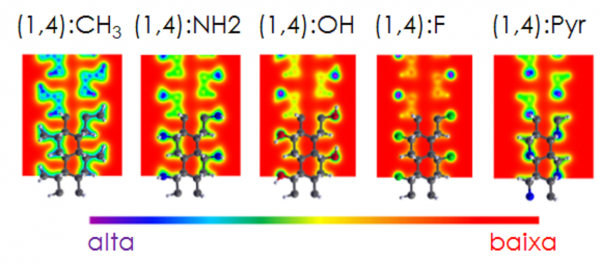
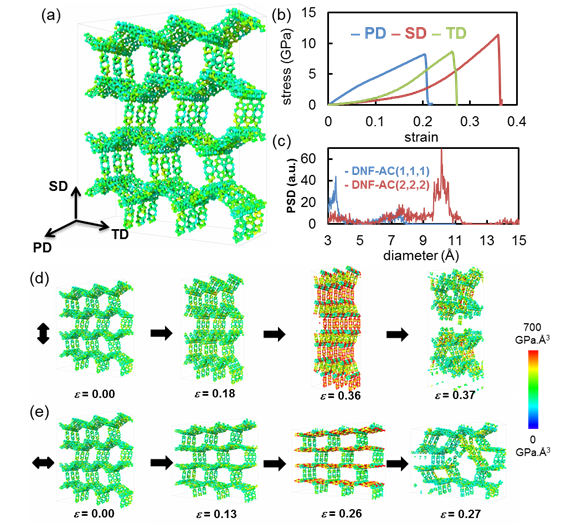
Reactive MD applied to pyrolysis of materials
Pyrolysis of organic materials can be used for varied purposes, such as the production of other materials. One example is the production of carbon molecular sieve membranes from pyrolysis of polymer precursors, which are suitable for gas separation and adsorption. We have used MD-ReaxFF simulations in conjunction with experimental techniques to investigate the mechanisms responsible for this transformation and obtain structural details of the final materials, as well as to evaluate the dependence on processing conditions used, aiming to develop process with an optimal control of structure and properties exhibited by the material.
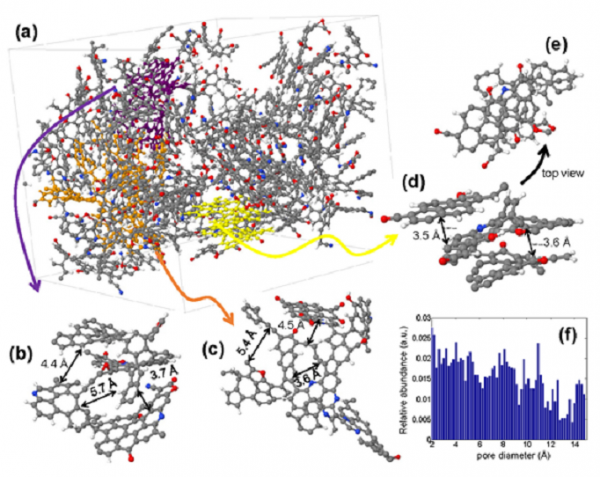
Novel two-dimensional materials: hybrid sp2/sp3 carbon-based nanostructures formed by superlattices of diamond-like/fullerenes embedded in bilayer graphene
We have introduced a novel family of carbon-based nanostructures, created by the insertion of interlayer sp3 covalent bonds in bilayer graphene. We have demonstrated that electronic, mechanical and thermal properties of the resulting material can be tuned by the density of sp3 bonds. For example, the material may be a metal or a semiconductor, may behave as a brittle or ductile material under tensile strain, and exhibits exotic thermal expansion behavior.
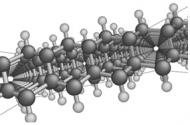
Electronic structure:
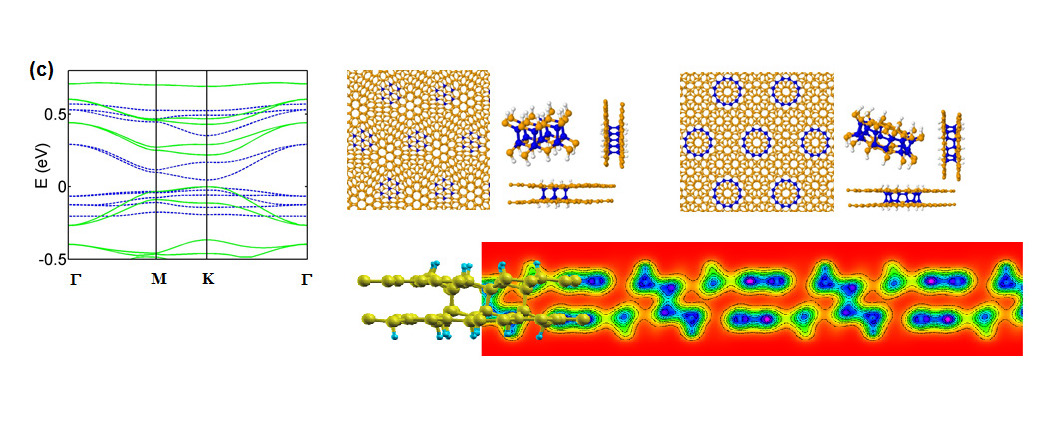
Mechanical behavior:


For more details, check the Publications list.
Mechanical properties of graphene nanomeshes/nanoporous graphene
Graphene nanomeshes/nanoporous graphene have been suggested for many practical applications, such as in nanoeletronics, sensors, and molecular sieving. Their efficiency when used in separation of gases and water desalinization has been demonstrated in several studies. We have applied MD simulations according to a reliable interatomic potential to explore the mechanical behavior of this type on nanostructure under strain. Interesting scaling laws were found for the dependence of the mechanical properties on the porosity of the material. Interesting fracture patterns have been found.
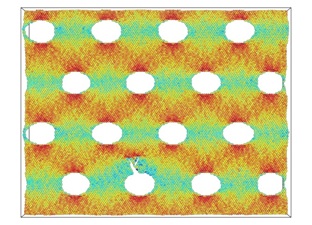

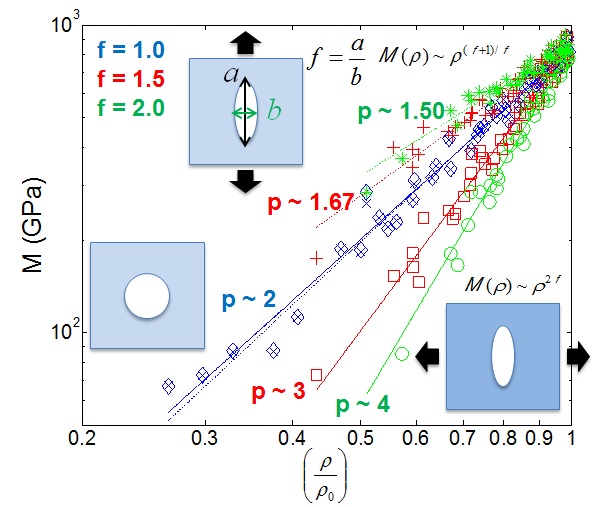
For more details, check the Publications list.
Other two-dimensional materials: single-layer phosphorene
One of the newest member of the growing family of two-dimensional materials is phosphorene, a very promising intrinsic semiconductor with potential applications in many areas. We have showed how the electronic properties can be tuned by the formation of nanoribbons, with different edges (allowing reconstructions and passivation), and applied a first-principles approach to estimate the thermodynamic stability of different edge terminations as a function of temperature and partial pressure of functionalizing species, generating a "phase diagram" indicating which phases/terminations would be the most likely to be found in the synthesis process.
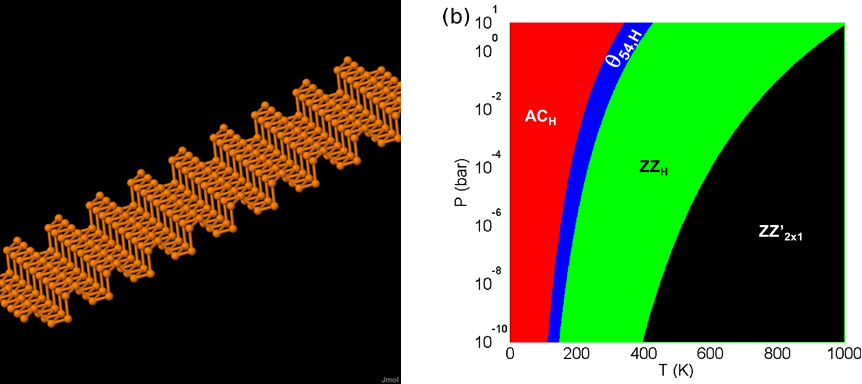
For more details, check the Publications list.
Other projects:
We also collaborate with other research groups in the Department of Chemical Engineering at UFRGS, in projects related to the modeling, simulation and optimization of processes at chemical, petrochemical and energy-related local companies from a PSE (Process Systems Engineering) point of view. These projects include the modeling and simulation of a industrial ethane cracking furnace and a pilot-plant coal gasifier for design of new synthesis processes.
